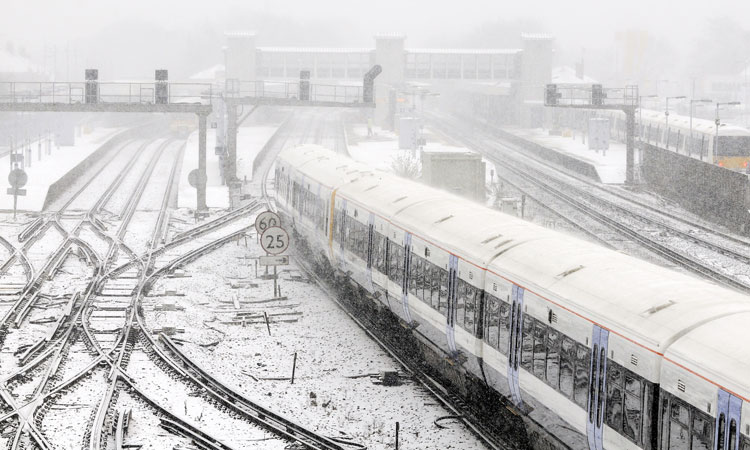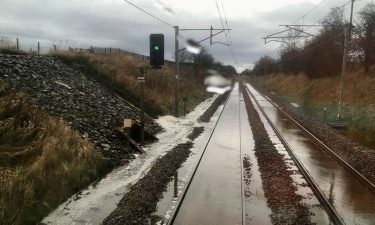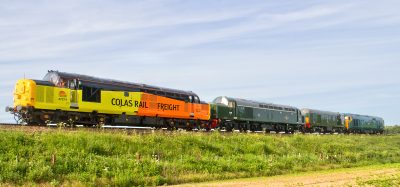The rise of extreme weather and the climate challenge for rail
Posted: 21 February 2020 | David Clarke | No comments yet
David Clarke, Technical Director at the Railway Industry Association (RIA) explains that building new infrastructure, along with several other measures, can help rail networks prepare for the effects of climate change.


Climate change is visibly affecting the globe. With the global temperature rising by one per cent, we’ve seen record-breaking heat in Australia and record low temperatures in the U.S. In the UK this winter, we’re experiencing more serve storms, with Storm Dennis recently bringing with it strong winds and more than a month’s worth of rainfall in just 48 hours. All of this ‘weather’ has adverse effects on the railway, with services suspended because of floods, trees falling on tracks and landslides. The Met Office has forecast that, if greenhouse gas emissions continue to rise, there will be an increased chance of more stormy winters in the future.
The climate challenge to the rail sector is threefold. Firstly, we must ensure every part of our industry is greener. Secondly, we must introduce new technologies that deliver a more resilient network and, lastly, build new infrastructure that can withstand extreme weather.
Greener trains
Rail is one of the greenest modes of transport, with 72 per cent of passenger rail journeys already using electrified railways. It is also clear that the technology that the rail industry needs to decarbonise already exists, but the extreme weather conditions highlight the urgency to get started on decarbonising the network. A tonne of carbon saved in 2020 is 30 times better than a tonne of carbon saved in 2050, due to the long lasting and cumulative effects of CO2 in the atmosphere. The more we do now to decarbonise, the greater the impact. This will require government and industry to think quickly and strategically about the roll out of electrification and new forms of clean traction technology, such as battery-powered and hydrogen-powered trains – technologies which are already attracting significant investment from the sector. At the Railway Industry Association (RIA), we are looking forward to seeing Network Rail’s Decarbonisation Study, when it is published in summer 2020, which will set out the different options for the network to ensure we can remove diesel from our operations by 2040 and decarbonise rail by 2050. Once funded, this will provide the strategic clarity the industry needs and allow the industry to invest in meeting the decarbonisation challenge head-on.
Winter storm effects: What is the industry doing?


Heavy winds and floods have the most significant impact on the railways. Credit: Network Rail
Heavy winds and floods have the most significant impact on the railways and the increasing change in the weather will have adverse effects on the running of the network, increasing disruptions and cost from the need to repair damaged assets. Climate change and more extreme weather events mean we need to be able to adapt and use new technologies to build a more resilient railway system. One area of focus will be earthworks, cuttings and embankments – which often date back to the construction of the railway – where water can cause washouts or trigger slips and failures that affect the safe running of the railway. Thorough the monitoring and management of earthworks, appropriate drainage solutions and proactive vegetation management are needed.
Network Rail, supported by its Rail Innovation and Development Centres (RIDC), is providing a safe environment for suppliers to test new technologies. The RIDCs in Tuxford and Melton currently have a drainage facility that is testing new railway drainage solutions. When it comes to vegetation management, Network Rail’s Aerial Survey Data Exploitation programme is collecting data that will allow for the better management of vegetation, allowing Network Rail to identify and predict when vegetation is at risk of falling on the track during high winds and needs to be removed, or where different vegetation would be more compatible with maintaining both the earthworks and bio-diversity.
New infrastructure
For the railway to adapt to climate change, our network needs new infrastructure that can withstand extreme weather events. Thinking about this is critical for major projects, and we’ve seen extreme weather being carefully considered in major projects such as Crossrail and HS2. However, infrastructure resilience needs to be considered across the board in both major projects and asset renewal schemes, since the assets being built today will need to cope with the weather many decades into the future.
Unlocking innovation
At RIA, we are running a number of Unlocking Innovation events throughout the year with the aim of creating a platform for large and small companies, academics and innovators to share ideas and challenges, ultimately leading to new innovative products becoming available to the industry. Currently, Unlocking Innovation is focused on four key technology areas – Materials, Automation, Data and Energy, or M.A.D.E. Emphasis on these four areas will drive innovation, transform the network and allow for a safe, reliable and sustainable network, irrespective of the increasingly extreme weather. A number of the events will look at how we tackle the issue of climate change and mitigate for extreme weather events.
Conclusion
The industry is already working and preparing for the effects of climate change on the network, but we must continue the industry-wide effort to both reduce greenhouse gas emissions and to develop new technologies and infrastructure that allow us to adapt to the changing climate.
Related topics
Adverse Weather, Crossrail/Elizabeth line, High Speed Two (HS2), Operational Performance, Sustainability/Decarbonisation







